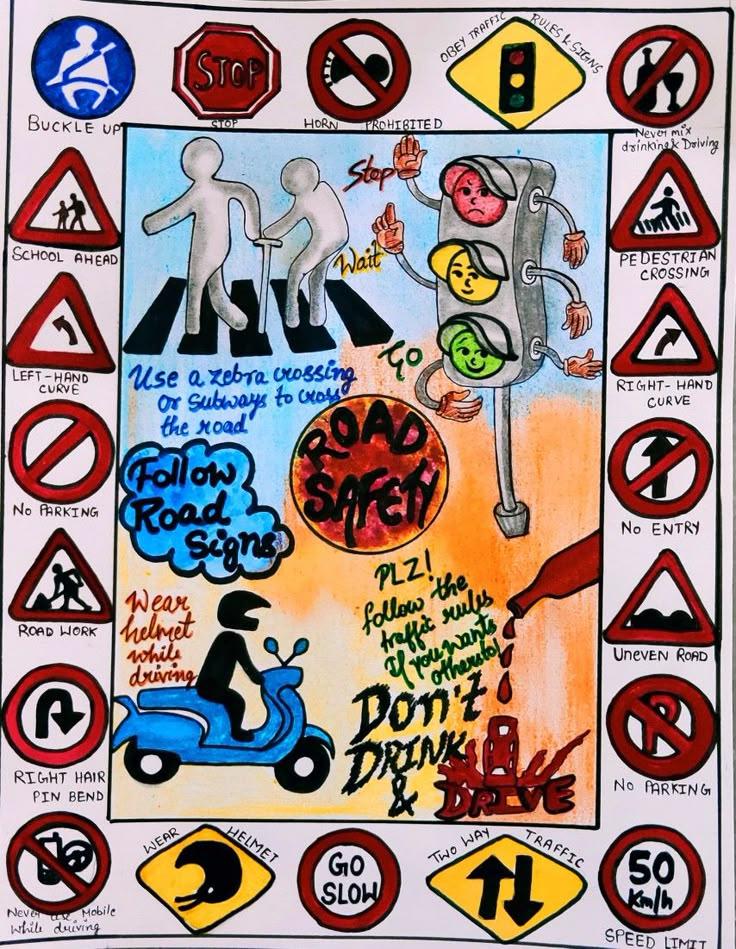Safety first: The shared responsibility of road safety
Road safety is a critical public health and developmental issue affecting everyone who uses the road—drivers, passengers, cyclists, and pedestrians. Every year, millions of people worldwide are killed or injured in traffic accidents, and the economic costs are staggering. While vehicle and road engineering improvements are vital, individual action and awareness are the cornerstones of preventing accidents and saving lives.
### The human factor: Avoiding the primary causes of accidents
Human error is the leading cause of most road accidents. Understanding and proactively avoiding these common mistakes is the most significant step each person can take toward making roads safer.
Overspeeding: For every 1% increase in mean speed, there is a 4% increase in the risk of a fatal crash. Driving within the posted speed limits gives you more time to react to unexpected hazards and reduces the severity of a collision.
Distracted driving: Activities like texting, talking on the phone, or even adjusting the radio can divert your attention from the road and lead to accidents. Remember, the phone call or text can wait—your life and others' cannot.
Driving under the influence: Driving while intoxicated by alcohol or drugs significantly impairs judgment, vision, and reaction time. This is a severe offense that endangers everyone on the road.
Not using protective gear: Wearing a seatbelt is mandatory and can reduce the risk of death for front-seat occupants by 45% to 50%. Similarly, wearing a proper helmet can reduce a motorcyclist's risk of death by 42%.
Ignoring traffic laws: Traffic signals, signs, and lane discipline are in place for a reason. Ignoring a red light, not signaling a turn, or driving on the wrong side of the road can lead to chaos and accidents.
### Safe practices for all road users
Road safety is a collective effort that requires responsible behavior from everyone.
For drivers
Practice defensive driving: Be constantly aware of your surroundings, anticipate the actions of other drivers, and maintain a safe distance from the vehicle in front of you. This is especially important during adverse weather conditions like rain or fog.
Regular vehicle maintenance: Ensure your vehicle is in good working order. Regularly check brakes, tires, lights, and other critical components to prevent mechanical failures that could cause an accident.
Avoid drowsy driving: Driving while fatigued impairs your ability to drive safely. If you feel tired, pull over and rest.
For pedestrians and cyclists
Use designated areas: Always use sidewalks, pedestrian crossings, and footbridges whenever they are available. Never cross the road between parked cars.
Stop, look, and listen: Before crossing the road, always stop at the curb, look right, then left, and then right again. Listen for oncoming traffic and cross only when it is safe.
Be visible: Wear bright or reflective clothing, especially when walking at night or in poor visibility conditions.
Put away distractions: Avoid using mobile phones or wearing earphones, which can prevent you from hearing traffic.
For children
Start early: Children should be taught road safety rules from a young age.
Hold hands: Younger children should always hold an adult's hand when crossing the street.
Set an example: Adults should be good role models by following all traffic rules themselves.
Never play on roads: Emphasize that roads are for vehicles, not for playing.
### The way forward: A multi-pronged strategy
Ensuring road safety is a complex challenge that requires a holistic, multi-pronged approach involving governments, organizations, and individuals.
Engineering: This includes building safer road infrastructure, rectifying accident-prone "black spots," and designing vehicles with advanced safety features like airbags and anti-lock braking systems (ABS).
Education: Awareness campaigns, driver training programs, and incorporating road safety into school curricula can help instill responsible behavior in all road users.
Enforcement: Strict enforcement of traffic laws and severe penalties for violations like drunk driving are necessary to deter reckless behavior.
Emergency care: Investing in and improving post-crash care and emergency medical services can significantly reduce fatalities and injuries.
Road safety is not merely a set of rules; it is a shared mindset and a collective commitment to protecting ourselves and others. By working together and making responsible choices, we can create safer roads and a more secure future for all.

